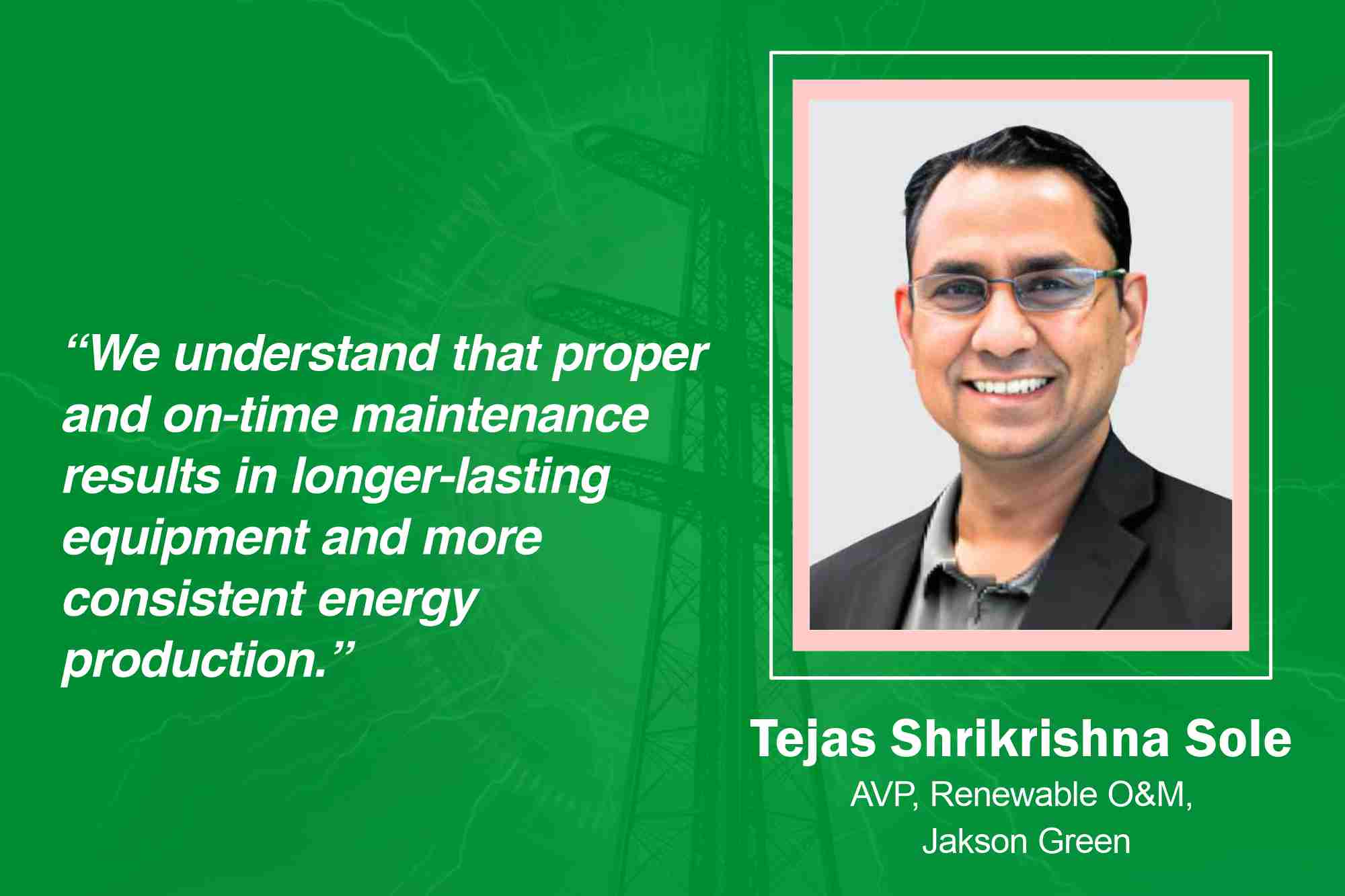Smart sensors and real-time data in solar practice
By EPR Magazine Editorial July 25, 2024 4:33 pm IST
By EPR Magazine Editorial July 25, 2024 4:33 pm IST

Proper and on-time maintenance results in longer-lasting equipment and more consistent energy production.
Tejas Shrikrishna Sole, AVP, Renewable O&M- Jakson Green
Solar panel maintenance faces challenges from dirt, weather, and component failures. Through proactive monitoring and management, predictive maintenance and smart grids enhance efficiency, cost-effectiveness, and renewable energy utilisation. Tejas Sole speaks with the EPR magazine to shed light on the challenges and scope of the solar panels.
What are the main challenges in solar panel maintenance?
One of the most common issues is the accumulation of dirt and debris, which leads to soiling losses. Weather conditions pose another major challenge, with extreme events potentially causing physical damage or loosening panels from their mounts.
Over time, solar panels naturally degrade, a process that environmental factors can accelerate. This gradual decline in efficiency is an ongoing concern for system owners. Electrical component failures, such as issues with inverters or cable connections, can lead to a partial or complete loss of power generation.
Shading losses from nearby objects like trees or buildings can disproportionately impact energy output, while nesting animals can cause physical damage to panels and wiring. High ambient temperatures can reduce panel efficiency, and using hard water for cleaning can leave efficiency-reducing mineral deposits on the glass surface.
Seasonal variations in weather and sunlight availability present ongoing challenges, as do corrosion and material degradation from constant exposure to the elements; a shortage of skilled maintenance personnel can lead to inadequate upkeep and prolonged periods of reduced efficiency.
Addressing these challenges through regular cleaning, inspections, and timely repairs is crucial to maximising energy production and system longevity. By staying on top of maintenance, solar panel owners can ensure their systems continue to operate at peak performance for years to come.
How does predictive maintenance enhance efficiency and cost-effectiveness amid environmental and material challenges?Predictive maintenance strategies play a critical role in minimising failures in solar Power Plants by utilising advanced technologies and data analysis to predict and prevent issues before they become significant problems.
These strategies involve continuous monitoring of solar panel performance through sensors and real-time data collection. By analysing this data, predictive maintenance systems can detect anomalies and potential issues early, allowing maintenance teams to address problems proactively.
This approach optimises maintenance scheduling by ensuring that maintenance is performed only, when necessary, based on actual system conditions rather than predetermined schedules. This reduces labour and material costs, minimises system downtime, and ensures more consistent energy production.
Predictive maintenance also helps extend the lifespan of solar panels and associated equipment by preventing minor issues from escalating into major failures. Additionally, predictive maintenance enhances safety by identifying potential risks such as electrical faults or structural weaknesses before they become hazardous.
The IoT devices and AI algorithms further improve the accuracy and effectiveness of predictive maintenance by enabling real-time data collection and sophisticated analysis.
How do small power grids and smart technology help us use more renewable energy from different places?
Small grids and smart technology are key to maximising renewable energy from various sources. They help us monitor energy use in real-time, balance supply and demand, and reduce waste. These systems can quickly adapt to changes in weather or energy needs, making the grid more resilient. Advanced storage, like batteries, allows us to save excess energy for later use.
The upfront costs can be high, and we need complex systems to manage different energy sources. The challenge is keeping these smart grids safe from cyberattacks. Despite these hurdles, with careful management, we can maximise the benefits of renewable energy across different locations.
We use cookies to personalize your experience. By continuing to visit this website you agree to our Terms & Conditions, Privacy Policy and Cookie Policy.